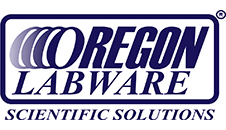Technical Information
Conditions to a good fusion:
- Selection of the most appropriate flux, so a better precision is obtained.
- Selection of an appropriate sample / flux, this index can fluctuate in 1/4 to 1/10 reaching 1/20 as in the case of refraction oxides (chrome).
- Appropriate selection of the grain size of the sample, so a perfect homogenization between the flux and the sample is obained.
- Complete oxidation of the sample, so it can be fully dissolved in the flux.
- Efficient shaking, in order to obtain an homogeneous melt and better rearrangement of the molecules during the cooling process.
- An ideal temperature for cooling the mold so there is no crystallization and no formation of crystal nodules.
Choose of the appropriate flux
- Is essecial to remind that a acid sample requires a basic flux and a basic sample requieres an acid flux.
- We can define the best flux since the estimated sample’s acidness:
- Acidness index: n° of oxygen atoms / n° of remaining atoms
- Lithium Tetraborate (Li2B4O7): 7 / 6 = 1,17
- Lithium Metaborate (LiBO2): 2 / 2 = 1
- Phosphorus Oxide (P2O5): 5 / 2 = 2,5
- Calcium Oxide (CaO): 1 / 1 = 1
- 0,5 < ——– SAMPLE’S ACIDNESS INDEX ——– > 2,5
- 100% Li2B4O7 < ———————————— > LiBO2
Maintance of the Platinum Material
- Never leave the platinum material in contact with SiC.
- Platinum forms an alloy with the most of the metals reducing its melting point and occasioning damages to the material, specially in the case when the metals already have a low melting point, as the Tin, Bismuth, Lead, Aluminum, Mercury, etc.
- Other elements can also be harmful to Platinum, even if in small quantities as Arsenium, Phosphorus, Boron, Silicon and Sulfur and also some heavy metals as Zinc and Antimony, and other metals already cited.
- The presence of Carbon and organic compounds may result in the reduction of some chemical compunds releasing metal compounds which can damage platinum due to formation of an alloy, as cited before.
- The materials which will be melted in the crucible should be fully oxidized, if the material is not oxidized, oxidized agents should be used. It should be guaranteed that the environment is oxidant.
- The external contamination on the platinum material, caused by its contact with a dirty surface, for example, can bring damages to the material. We recommend that only porcelain suports or revested tongs should be used. Also, platinum materials should not be manipulated without gloves.
- Do not emerge tongs revested in platinum in acids or bases, due to the danger to the penetration of the liquid into the tongs, causing corrosion.
- It’s recomended to use separated platinum materials for samples which contain impurities which causes damages, as Lead, Sulfur and Phosphorus.
- Never use Bunsen’s nib to clean Platinum materials.
- Minimize the mechanical damages of the Platinum materials.
Cleaning of the Platinum Materials
The cleaning of this type of materials can be done using:
- Citric Acid Solution 50% in ultra-sonic bath ~ 70°C
- Hydrochloric Acid Solution 10% in ultra-sonic bath ~ 50°C
- Sulfuric Acid Solution 10% in ultra-sonic bath ~ 70°C
How to preparate a “risk sample” dor fusion:
- Prepare a moisture of oxydation of 1,25g containing: 60% NaNO3 + 20% KNO3 + 20% Sr (NO3)2
- Add 2g of Na2CO3
- Add 250mg of the sample to be fused and mix
- Add the mix in the crucible, which should already contain 1,5g of Li2B4O7
The oxydizing mixture is fused before the sample, forming a coating which avoids the contact of the sample with the crucible, protecting the Platinum piece. The nitrates are selected in order to cover a wide range of temperature, ensuring that the whole sample is oxidized.
OREGON LABWARE
Quality, diversification and service, these are the pillars of our company to better serve our customers.
Types of Crucibles
Types of Molds
Types of Accessories
%
